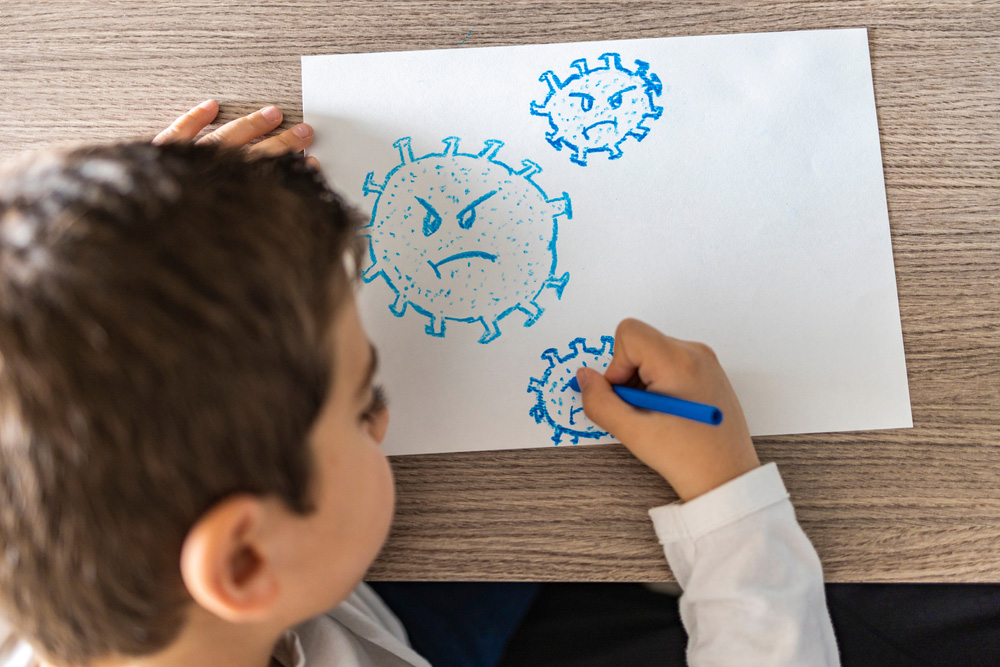Compiled by veteran medical journalist Brian Owens, this roundup of some of the newest science on the COVID-19 pandemic, straight from the scientific journals, is presented by Hakai Magazine in partnership with The Tyee.
More children may be infected than thought
The number of children in the United States infected with SARS-CoV-2, the virus that causes COVID-19, may be much higher than currently thought. Based on data from China, researchers estimate that for every child who requires intensive care for COVID-19, another 2,381 are also infected. If 25 per cent of the U.S. population becomes infected by the end of 2020, around 5,400 children will require intensive care — outstripping the number of pediatric ICU beds in the U.S.
Journal of Public Health Management and Practice, April 16, 2020
Hong Kong was successful at containing COVID-19 without lockdown
Hong Kong managed to avoid a major COVID-19 outbreak up to March 31 without resorting to the drastic lockdown measures seen in other parts of China and around the world. The territory used a combination of border restrictions, quarantine and isolations of cases, aggressive testing and contact tracing, and some physical distancing. Those tactics kept the rate of transmission low — an approach that would probably be feasible in many other places, given enough resources.
The Lancet Public Health, April 17, 2020
Genetic variability in immune systems may affect severity of COVID-19
How susceptible individuals are to COVID-19, and how severe an infection would be, may be tied to genetics. Variations in human leukocyte antigen genes — the genes involved with identifying pathogens — could affect how well the body recognizes SARS-CoV-2. Differences in these genes could explain why some people are more vulnerable to the virus.
Journal of Virology, April 17, 2020
Primate model found to test therapies
Researchers have found that SARS-CoV-2, the virus that causes COVID-19, causes a mild illness in cynomolgus macaques, suggesting that the monkeys are a promising animal model for testing treatments for the disease. Any potential new treatment will need to be tested in animals before being used in humans.
Six feet may not be not enough distance
The internationally recommended six-foot, or two metre, physical distancing rule to prevent the spread of COVID-19 may not be enough if someone coughs directly at you indoors, according to researchers from Western University in Ontario. Using a “cough chamber” to analyze the airflow from a person coughing, they found that even at 2.5 metres, or eight feet, the airflow of the cough was still moving. The research was done using people infected with seasonal flu, before the COVID-19 pandemic, but the researchers say the data provides valuable insight into how cough droplets move.
Two potential treatments fail testing
A small clinical trial of two antiviral drugs, the HIV medication lopinavir/ritonavir (LPV/r), and the flu drug Arbidol, has found that neither improves the outcome for people hospitalized with mild or moderate cases of COVID-19. Both drugs also caused some side effects. The researchers tested the antivirals because they had been selected as candidates for treatment by the National Health Commission of China.
Gender-based violence has increased during the pandemic
Early evidence from China shows that gender-based violence has increased during the COVID-19 pandemic, as it does during every global emergency. One police station in Hubei province, for example, reported a tripling of domestic violence reports in February during the lockdown. Cultural norms that relegate women to care work, including unpaid work in the home, puts them on the frontlines of the epidemic, while generally excluding them from the government response, the researchers say. The unintended consequences of a lockdown for women vulnerable to domestic violence is often overlooked — an increase in violence and loss of access to emergency services.
Fast test gives results in less than a minute
Researchers have designed a test for COVID-19 that they say can give results in less than one minute. The test uses a sheet of graphene, called a field-effect transistor, with antibodies to SARS-CoV-2 attached. When nasal swabs are applied to the sensor, the virus binds to the antibodies and causes a change in the electrical current. Though fast, the test is around two to four times less sensitive than the current standard test, and so tends to give erroneous results. It will need further development.
Air pollution linked to COVID-19 deaths
A study that combines satellite data on air pollution and air currents with confirmed deaths related to COVID-19 has found that regions with permanently high levels of nitrogen dioxide pollution have significantly more deaths from COVID-19 than other areas. Nitrogen dioxide is a pollutant that mainly comes from the burning of fossil fuels, which damages the human respiratory tract. Persistent pollution in some areas could have led to poorer overall health, making people there more susceptible to respiratory infections.
Science of the Total Environment, April 11, 2020 ![]()
Read more: Health, Coronavirus, Science + Tech















Tyee Commenting Guidelines
Comments that violate guidelines risk being deleted, and violations may result in a temporary or permanent user ban. Maintain the spirit of good conversation to stay in the discussion.
*Please note The Tyee is not a forum for spreading misinformation about COVID-19, denying its existence or minimizing its risk to public health.
Do:
Do not: